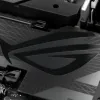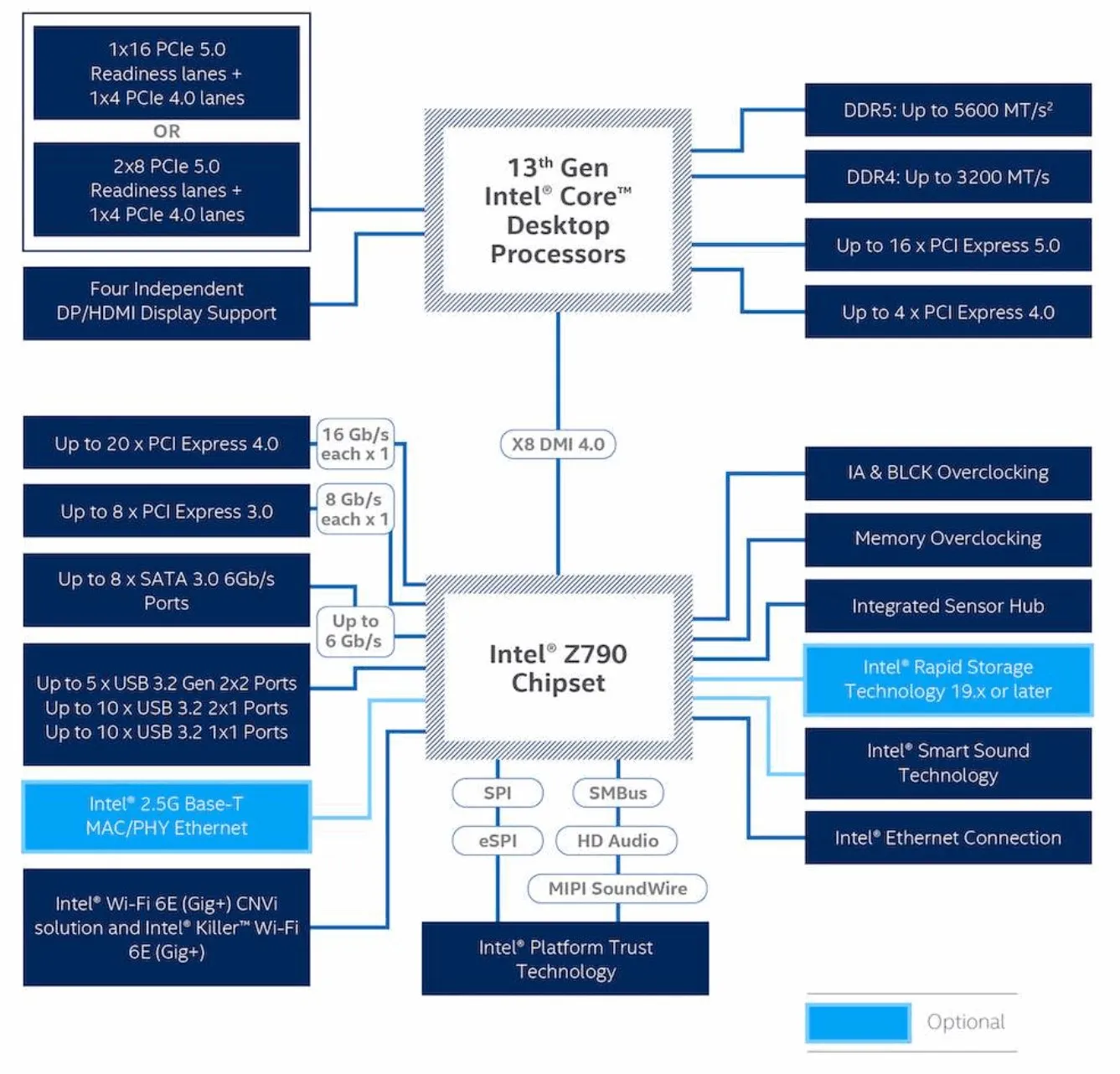The Z790 Chipset
If you went with 12th-gen Alder Lake, you could upgrade to Raptor Lake or the new refresh processors. Intel is utilizing the same LGA1700 socket as before, most Z690 motherboards will handle 13th-generation CPUs. Along with the release date, Intel is introducing Z790 motherboards. You may utilize DDR4 or DDR5 memory regardless of the chipset as long as your motherboard supports the memory standard you want to use. Although several Z690 motherboards have already included 13th-generation CPU capability, most B- and H-series boards have not. You should check with your motherboard vendor to ensure that the next generation is supported.
The Z790 chipset offers additional PCIe Gen 4 downstream lanes. Along with the enhanced downstream connectivity, you also gain an additional 20 Gbps USB 3.2x2 port. While the Z690 chipset provides up to 12 downstream PCIe Gen 4 lanes and up to 16 downstream PCIe Gen 3 lanes, the Z790 offers up to 20 downstream PCIe Gen 4 lanes and up to 8 downstream PCIe Gen 3 lanes. Both chipsets utilize DMI 4.0 x8 as the chipset bus, which serves as the connection between the processor and the chipset, offering bandwidth comparable to PCI-Express 4.0 x8, providing 128 Gbps per direction.
The Z790 chipset permits motherboard manufacturers to connect up to five M.2 NVMe Gen 4 slots to the chipset or integrate a greater number of high-bandwidth onboard devices compared to the Z690 chipset. These devices may include discrete USB4 host controllers, Thunderbolt 4 80 Gbps controllers, and a few additional PCIe Gen 4 slots.


